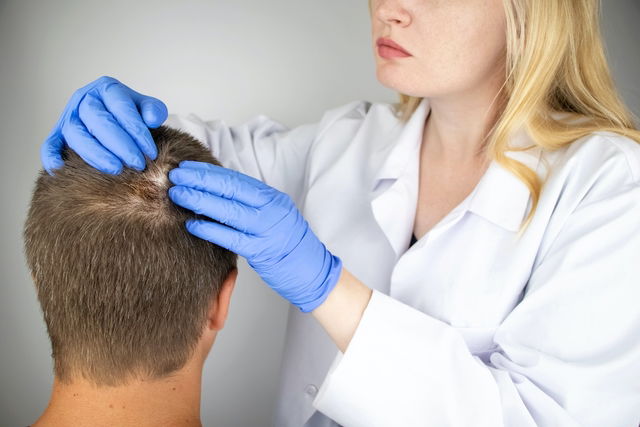Tinea capitis refers to a fungal scalp infection. This can cause intense itching, dandruff, yellow crust on the head, and hair loss in some areas of the head.
Tinea capitis is caused mainly by fungi of the Trichophyton or Microsporum genus. It can be found in the outer layers of the skin of the scalp and the hair shaft, and can be easily transmitted from person to person through direct contact or sharing combs, towels or hats.
The treatment of tinea capitis should be oriented by a dermatologist, who will generally prescribe antifungal shampoo or tablets. It is important to adhere to the treatment plan to prevent fungal regrowth and worsening of symptoms.

Main symptoms
The main symptoms of tinea capitis are
- Intense scalp itching
- Round plaques or spots on the scalp
- Mild pain or redness in the area
- Skin peeling
- Dandruff;
- Black dots on the scalp
- Areas with hair loss or broken strands
- Yellow crust
- Scalp pain or sensitivity
In addition to these symptoms, some people may also experience a sore neck as an immune system response to combat the infection.
In some cases, tinea capitis can trigger scalp inflammation, which can lead to the appearance of swelling, blisters and pus in the affected region. This can lead to permanent hair loss.
Confirming a diagnosis
Tinea capitis is diagnosed through an assessment of the patient's symptoms and inspection of the scalp. The doctor may scrape a specimen of the lesions, dandruff or hair for lab analysis and to confirm the present of fungus. Identifying the type of fungus present can help to determine the best treatment approach.
Possible causes
Tinea capitis is caused by fungi of the Trichophyton or Microsporum genus. These fungi attack and grow on the outer layer of scalp skin and on the hair shaft.
These fungi can be transmitted through direct contact with the hair of an infected person or indirectly by sharing things like combs, towels, elastics, hats or pillowcases, for example.
Generally, this type of fungal infection is more common in children, as they are more likely to touch their heads and share objects that are in contact with their hair.
Treatment options
Treatment for tinea capitis is oriented by a dermatologist and is aimed at eliminating the fungus causing infection. The main treatments include:
1. Antifungal remedies
The oral antifungals that are most commonly by dermatologists are griseofulvin and terbinafine. These should be taken for approximately 4 to 8 weeks, even if symptoms have already improved.
More severe infections may also require use of oral corticosteroids to help reduce scalp inflammation and reduce the risk of permanent hair loss. These corticosteroids can be used for a short period of time together with oral antifungals.
2. Antifungal shampoos
In addition to oral remedies, the doctor may also prescribe specific hair hygiene practices together with an antifungal shampoo. These shampoos will typically contain ketoconazole or selenium sulfide, which help to remove the fungus and prevent transmission to other people or other areas of the body.
Shampoos help to quickly alleviate symptoms, but do not completely prevent fungus from developing. Therefore, it is always recommended to use shampoos together with oral antifungal medication.
